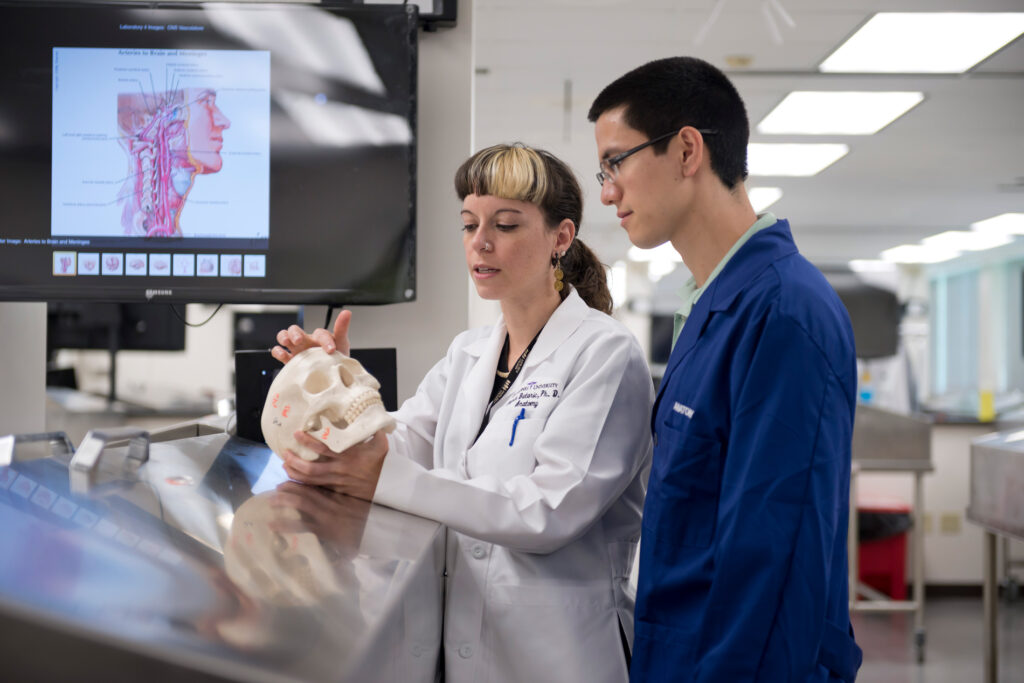Lauren Butaric, Ph.D., has spent a fair amount of time hunting through dusty bins of skulls at museums and universities, searching for ones that aren’t broken so she can take CT scans of their nasal sinuses to produce 3D models for her research on craniofacial variation. The associate professor of anatomy demonstrates similar dedication to students and colleagues.
Known for her enthusiastic and engaging instruction, she teaches a variety of courses for DMU’s osteopathic medicine, podiatric medicine, physician assistant and master of science in anatomy (M.S.A.) programs. She serves as a research mentor to numerous students.
She led the incorporation of ultrasound in the anatomy curriculum and worked with other faculty to create a new thesis track in the M.S.A. degree program. And when the COVID-19 pandemic required many courses to take place virtually, she researched and found an online anatomy dissector that met instructional needs for the University’s clinical and M.S.A. programs.
For her teaching, research and mentoring excellence, Dr. Butaric received the DMU Faculty Organization’s inaugural Paul E. Emmans Outstanding Faculty Teacher Award. Created by a gift to the Purple & Proud Campaign from Paul Emmans, D.O.’71, the award recognizes faculty members who demonstrate a commitment to teaching through their expertise and innovation, classroom presentation skills and professional role modeling.
Dr. Emmans is a family medicine physician in central Washington state whose father, Paul, was a 1944 graduate of Des Moines Still College, now. DMU. The senior Dr. Emmans was a family medicine physician and surgeon who went on to serve on the DMU Board of Trustees.
In her research, Dr. Butaric compares the nasal cavity and sinuses among skulls of individuals from different geographic locations to learn how they are affected by climate, temperature, dust and pollen. To better understand the development and structure of the facial/nasal structures of children, she collaborated with an anatomy professor at the University of North Texas to create digital models of children’s air spaces. She also worked with an aerospace engineer there in using airflow dynamics to understand how air flows through models of differently shaped nasal passages.
In addition, Dr. Butaric and Heather Garvin, Ph.D., associate professor of anatomy, obtained an internal DMU research grant related to assessing error rates in using the frontal sinuses of the skull to identify deceased individuals, given the high level of precision required in a court of law. Dr. Garvin assists the state medical examiner’s office as the only board-certified forensic anthropologist in Iowa.
Understanding more about craniofacial structure, variation and the purposes of that variation is important to life and health in a changing environment, Dr. Butaric says.
“Coming from an anthropological background, I look at how and why our physical structures vary. Now that I’m at a medical school, I can also ask, ‘Why should we care?’” she says. “A lot of people think anatomy is a dead subject, no pun intended. But there’s so much to learn about the variations in anatomy, how they happen and why it matters. There’s more to learn about the impact of lifestyles and environments on human anatomy.”

